Retargeting and Remarketing: Boosting Conversions with Performance Marketing
In the digital world, capturing and holding a consumer’s attention is increasingly challenging. Visitors often browse websites, engage with products, and leave without making a purchase. This is where retargeting and remarketing come into play, pivotal performance marketing strategies specifically designed to re-engage potential customers, gently nudging them toward conversions.
This blog explores the importance of retargeting and remarketing, how they differ, and actionable strategies to leverage them effectively for maximum ROI.

Understanding Retargeting and Remarketing
What Is Retargeting?
Retargeting is a technique in digital advertising that targets users who have previously visited a website or engaged with a brand’s content but didn’t complete a conversion (e.g., purchase, sign-up). Retargeting ads “follow” users across various digital channels, such as social media, websites, or apps, using data from cookies. These ads serve as subtle reminders of the product or service they’ve shown interest in, keeping the brand top of mind.
What Is Remarketing?
Remarketing, often used interchangeably with retargeting, typically focuses on re-engaging users through personalized email marketing campaigns. When users abandon a shopping cart or leave after browsing a product, remarketing aims to re-capture their attention by sending targeted emails. These emails may contain discounts, reminders, or new product suggestions based on their browsing history.
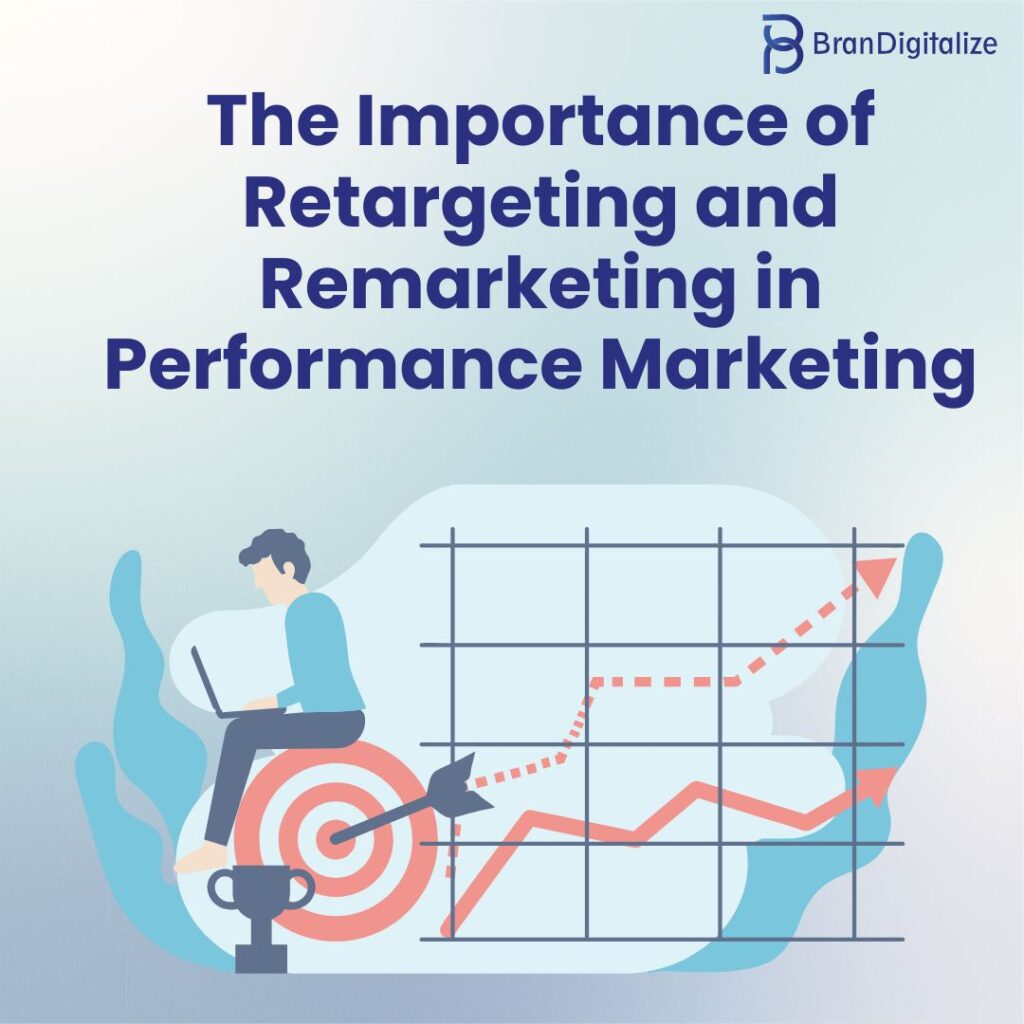
The Importance of Retargeting and Remarketing in Performance Marketing
Both strategies are critical components of performance marketing, a data-driven approach aimed at achieving specific, measurable results. Performance marketing relies on strategies like retargeting and remarketing to optimize conversions by re-engaging potential customers.
Why These Strategies Matter
- Increased Conversions: Users who are exposed to retargeted ads are 70% more likely to convert compared to those who aren’t. This is because the audience has already shown interest, making them warmer leads.
- Improved ROI: By focusing on users who have previously interacted with the brand, retargeting and remarketing reduce the cost per conversion, delivering higher returns.
- Enhanced Brand Recall: These strategies keep the brand in the customer’s line of sight, strengthening familiarity and trust.
- Reduced Cart Abandonment: Remarketing emails act as a gentle reminder to complete purchases, often incentivizing users with discounts or offers.

Key Differences Between Retargeting and Remarketing
Though similar, the distinctions between retargeting and remarketing are crucial:
| Aspect | Retargeting | Remarketing |
| Method | Display Ads across platforms | Email campaigns |
| Objective | Re-engage visitors across the web | Directly communicate with users via email |
| Typical Platforms | Social media, search engines, ad networks | Email marketing platforms like Mailchimp |
| Best For | Building brand recall and driving traffic | Recovering abandoned carts and re-engaging email subscribers |
Understanding these differences allows marketers to create complementary strategies that work together to maximize conversions.

Strategies for Effective Retargeting
Retargeting is a multi-layered approach that can be customized based on user behavior. Here are effective retargeting strategies to enhance conversions:
1. Segment Your Audience
Not all visitors are the same. Segment your audience based on behavior (e.g., page views, cart abandoners, time spent on site) to create tailored retargeting ads. For instance:
- Cart Abandoners: Target with reminders or incentives.
- Product Viewers: Show related products or customer reviews to build interest.
2. Dynamic Retargeting for Personalized Ads
Dynamic retargeting uses machine learning to show users ads of the exact products they viewed. This personalized approach not only increases click-through rates but also resonates more with the audience, as it is tailored to their specific interests.
3. Use Frequency Capping to Avoid Overexposure
While retargeting aims to keep your brand visible, overexposing users can lead to ad fatigue. Set frequency caps to control how often your ads are shown, ensuring users aren’t overwhelmed.
4. Leverage Cross-Platform Retargeting
Users interact with brands across multiple platforms – from social media to search engines. To maximize reach, retarget across multiple channels like Facebook, Google Display Network, and Instagram to ensure comprehensive exposure.
5. Incorporate Seasonal and Limited-Time Offers
Creating a sense of urgency can effectively prompt conversions. Highlight seasonal sales, limited-time discounts, or exclusive promotions in your retargeting ads to encourage immediate action.
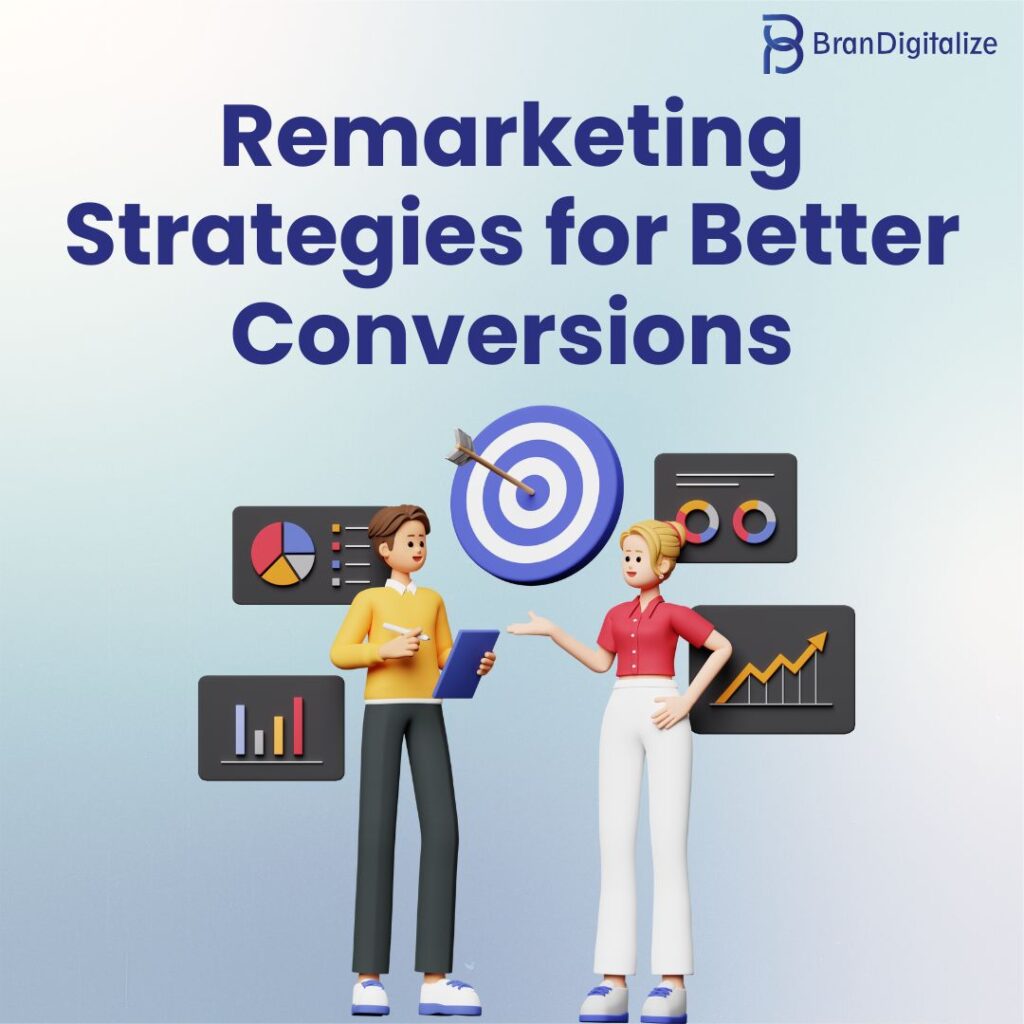
Remarketing Strategies for Better Conversions
Remarketing is particularly effective for users who leave your website without converting. Here’s how to make the most of your remarketing campaigns:
1. Personalized Email Sequences
Email remarketing should be personalized based on user behavior. Send tailored emails for different user actions:
- Browse Abandonment: Send an email highlighting the products viewed, along with a recommendation.
- Cart Abandonment: Offer a discount or reminder to complete the purchase.
- Post-Purchase: Send cross-sell and upsell emails to promote complementary products.
2. Create Value-Added Content
Remarketing emails don’t always have to push for conversions. Content-based emails, such as guides, how-tos, and product use tips, can build value, fostering a positive brand relationship. This content subtly reminds customers of the brand, making them more likely to consider future purchases.
3. Experiment with Incentives
Test different types of incentives like discount codes, free shipping offers, or bundle deals to see which ones resonate most with your audience. A/B testing can help fine-tune which types of incentives are most effective for driving conversions.
4. Set Up Automated Triggers for Real-Time Follow-Ups
Using marketing automation tools, set up triggers for specific actions. For example, if a user abandons their cart, a follow-up email should be sent within an hour, capitalizing on their recent engagement.
5. Utilize Social Proof to Build Trust
Adding customer reviews, testimonials, and user-generated content in remarketing emails reassures potential buyers about the product’s value. Social proof helps reduce hesitation and encourages conversions by showing that other customers have had positive experiences.
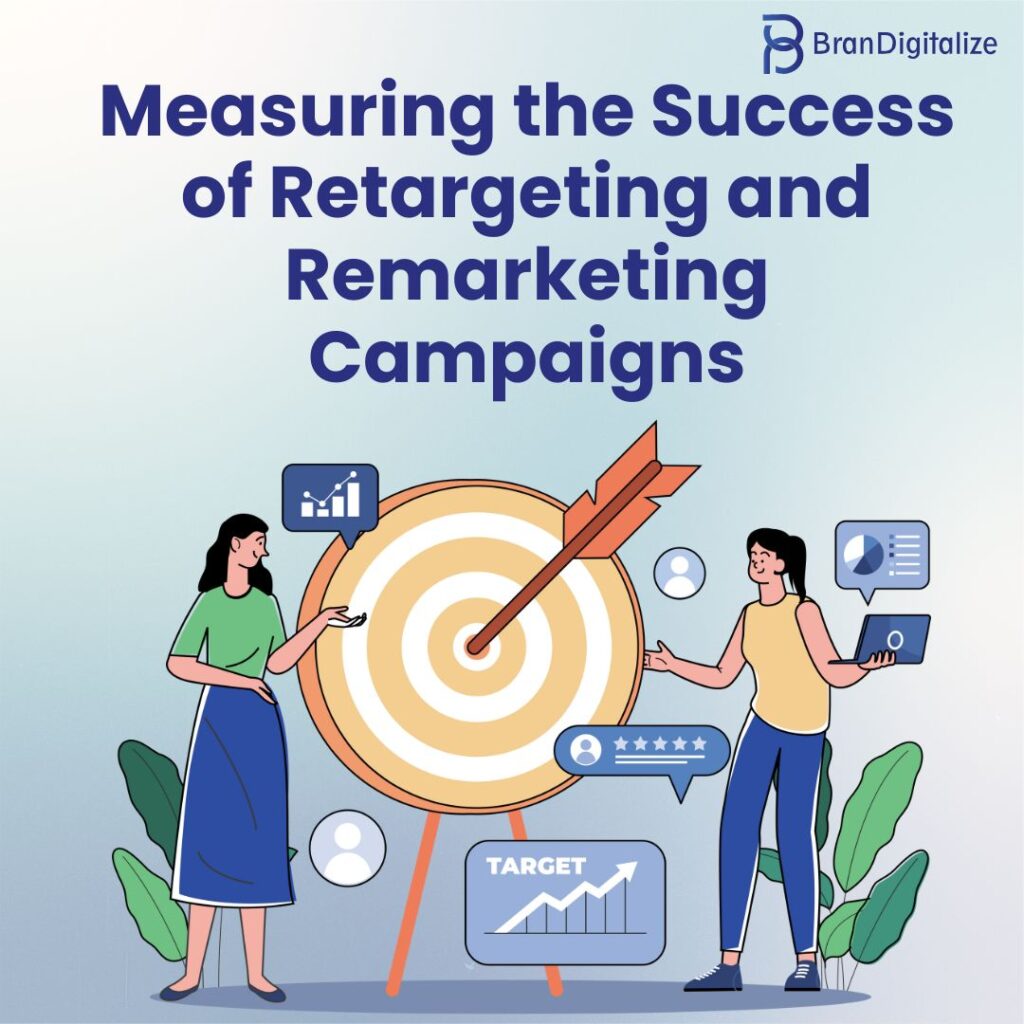
Measuring the Success of Retargeting and Remarketing Campaigns
Success metrics are vital for assessing whether your retargeting and remarketing campaigns are meeting their objectives. Here’s what to track:
1. Conversion Rate
This is the primary metric to gauge how well your campaigns are converting retargeted or remarketed users. A higher conversion rate signals effective targeting and engagement strategies.
2. Click-Through Rate (CTR)
CTR helps measure the appeal of your ads and emails. If CTR is low, consider testing different visuals, copy, or calls to action.
3. Return on Ad Spend (ROAS)
ROAS is a crucial metric in performance marketing. It shows how much revenue you’re generating for each dollar spent on advertising. By focusing on ROAS, you can adjust ad spending based on which campaigns deliver the highest returns.
4. Bounce Rate for Landing Pages
When users click on a retargeted ad, they are often directed to a specific landing page. If the bounce rate is high, there might be a disconnect between the ad message and the landing page, suggesting a need for alignment.
5. Customer Lifetime Value (CLTV)
Retargeting and remarketing are often part of a larger customer journey. Tracking CLTV helps measure how these campaigns contribute to long-term value, rather than just short-term conversions.
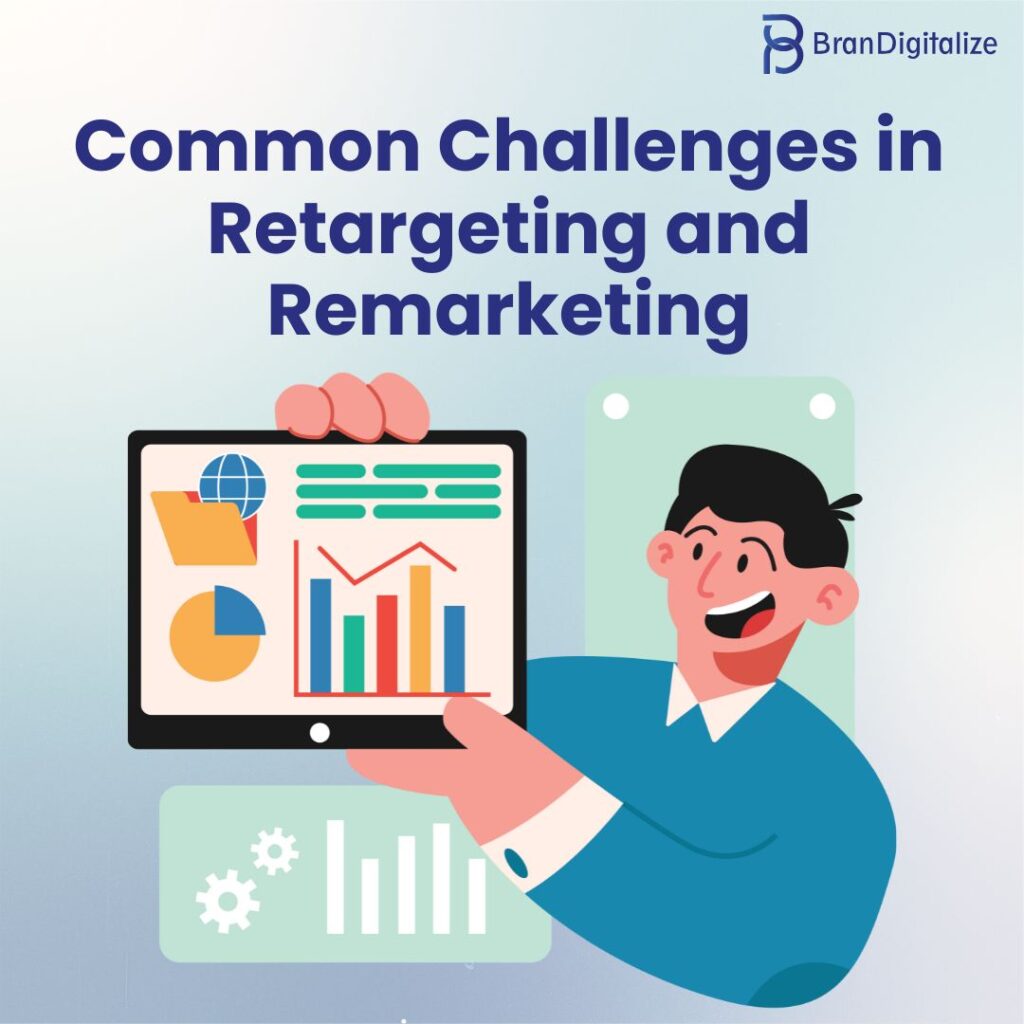
Common Challenges in Retargeting and Remarketing
Even with targeted strategies, there are common challenges marketers may face:
1. Ad Fatigue
When users see the same ad repeatedly, they may begin to ignore it. Combat ad fatigue by rotating visuals, copy, and formats regularly.
2. Privacy and Data Concerns
Users are becoming more conscious of data privacy. Ensuring transparency about data usage and providing opt-out options can help maintain trust.
3. Complexity in Attribution
Properly attributing conversions to retargeting and remarketing can be difficult, especially when customers interact with multiple touchpoints. Use an attribution model that gives fair credit to these campaigns in the conversion journey.
4. Balancing Personalization and Privacy
Personalization is essential for retargeting and remarketing success. However, excessive personalization can sometimes feel intrusive. Stick to respectful, non-invasive personalization practices to avoid negative user experiences.

Retargeting and Remarketing Best Practices
To get the most out of your campaigns, keep the following best practices in mind:
- Prioritize Relevance: Ensure your ads are relevant to the user’s last interaction, keeping messaging aligned with their interests.
- Optimize Ad Creatives: Design eye-catching ads with clear CTAs. For email campaigns, ensure a balance between visuals and informative content.
- A/B Test Frequently: Experiment with different versions of ads, emails, offers, and landing pages to continuously improve your strategy.
- Monitor Campaigns Regularly: Regular tracking and adjustments help avoid overspending on underperforming ads and ensure maximum returns.
Conclusion
Retargeting and remarketing are powerful components of a successful performance marketing strategy. By understanding their distinct roles and implementing strategic tactics, businesses can turn lost opportunities into loyal customers. Both approaches offer a chance to build connections and reinforce brand loyalty.

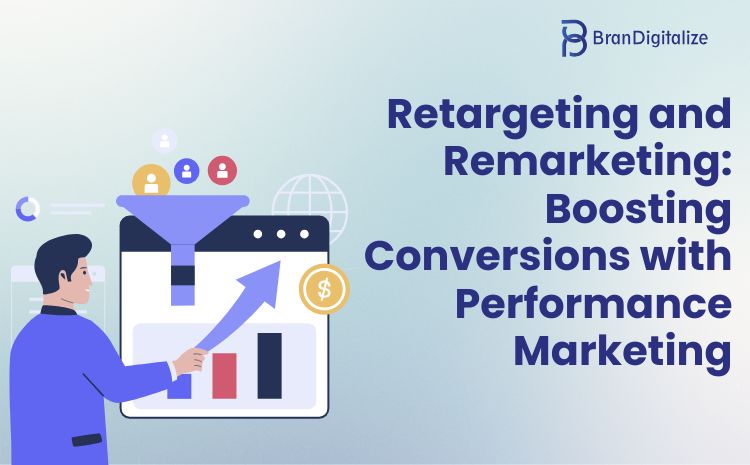











Write a Comment